Launch Windows as the Guest VM on ACRN¶
This tutorial describes how to launch Windows as a Guest (WaaG) VM on the ACRN hypervisor.
Verified version¶
- Clear Linux version: 33050
- ACRN-hypervisor tag: v1.6.1 (acrn-2020w18.4-140000p)
- ACRN-Kernel (Service VM kernel): 4.19.120-108.iot-lts2018-sos
- Windows 10 Version:
- Microsoft Windows 10 Enterprise, 10.0.17134 Build 17134
- Microsoft Windows 10 Enterprise LTSC Evaluation, 10.0.17763 Build 17763
- Windows graphics driver:
- igfx_win10_100.7212.zip
Hardware setup¶
The following Intel Kaby Lake NUCs are verified:
| Platform Model | BIOS Version | BIOS Download Link |
|---|---|---|
| NUC7i7DNHE | DNKBLi7v.86A.0052.2018.0808.1344 | link |
| NUC7i5DNHE | DNKBLi5v.86A.0060.2018.1220.1536 | link |
ACRN Service VM Setup¶
If necessary, refer to the steps in Use SDC Mode on the NUC to set up ACRN on the KBL NUC. Once complete, you should be able to launch the Service VM successfully.
Setup for Using Windows as the Guest VM¶
All patches to support WaaG have been upstreamed; download them from the
acrn-hypervisor repository.
Build ACRN EFI Images¶
Follow the steps described at Build ACRN from Source to set up the build environment.
Use the
makecommand to compile theacrn.efiandacrn-dm:$ git clone https://github.com/projectacrn/acrn-hypervisor.git $ cd acrn-hypervisor $ make FIRMWARE=uefi BOARD=kbl-nuc-i7
Get the outputs from the following:
$ build/hypervisor/acrn.efi $ build/devicemodel/acrn-dm
Replace the
acrn.efiandacrn-dmon your NUC:Log in to the ACRN Service VM and then
mountthe EFI partition to/bootscptheacrn.efiandacrn-dmfrom your host:# scp <acrn.efi from your host> /boot/EFI/acrn/ # scp <acrn-dm from your host> /usr/bin/ # chmod +x /usr/bin/acrn-dm && sync
Build the Service VM Kernel¶
Follow the steps described at Build ACRN from Source to set up the build environment.
Follow the steps below to build the ACRN kernel:
$ WORKDIR=`pwd`; $ JOBS=`nproc` $ git clone -b master https://github.com/projectacrn/acrn-kernel.git $ cd acrn-kernel && mkdir -p ${WORKDIR}/{build,build-rootfs} $ cp kernel_config_uefi_sos ${WORKDIR}/build/.config $ make olddefconfig O=${WORKDIR}/build && make -j${JOBS} O=${WORKDIR}/build $ make modules_install INSTALL_MOD_PATH=${WORKDIR}/build-rootfs O=${WORKDIR}/build -j${JOBS}
Update the Kernel on KBL NUC¶
Copy the new kernel image (bzImage) and its modules to the target machine:
# scp <your host>:$WORKDIR/build/arch/x86/boot/bzImage /boot/bzImage # scp -r <your host>:$WORKDIR/build-rootfs/lib/modules/* /lib/modules/ # cp /boot/loader/entries/acrn.conf /boot/loader/entries/acrngt.conf
Modify
acrngt.confto the content as shown below:title The ACRNGT Service VM linux /bzImage options console=tty0 console=ttyS0 root=/dev/sda3 rw rootwait ignore_loglevel no_timer_check consoleblank=0 i915.nuclear_pageflip=1 i915.avail_planes_per_pipe=0x010101 i915.domain_plane_owners=0x011100001111 i915.enable_gvt=1 i915.enable_conformance_check=0 i915.enable_guc=0 hvlog=2M@0x1FE00000
Note
Change
/dev/sda3to your file system partition.rebootthe Service VM and selectThe ACRNGT Service VMfrom the boot menu to apply the ACRN kernel and hypervisor updates.
Create Windows 10 Image in Service VM¶
Create a Windows 10 image to install Windows 10 onto a virtual disk.
Download Win10 ISO and Drivers¶
- Download Windows 10 LTSC ISO.
- Select ISO-LTSC, then click Continue.
- Complete the required info then click Continue.
- Select the language and x86 64 bit, then click Download ISO and save as
windows10-LTSC-17763.iso.
- Download the Intel DCH Graphics Driver.
- Download the Oracle Windows driver.
- Sign in. If you do not have an Oracle account, register for one.
- Select Download Package. Key in Oracle Linux 7.6 and click Search.
- Click DLP: Oracle Linux 7.6; it will be added to your Cart.
- Click Checkout which is located at the top right corner.
- Under Platforms/Language, select x86 64 bit, and click Continue.
- Check I accept the terms in the license agreement; click Continue.
- In the list, right check the item labeled Oracle VirtIO Drivers Version for Microsoft Windows 1.x.x, yy MB, and then Save link as …. Currently, it is named V982789-01.zip.
- Click Download. When the download is complete, unzip the file. You will see an ISO named winvirtio.iso.
Create Raw Disk¶
Run these commands on the Service VM:
# swupd bundle-add kvm-host
# mkdir /root/img
# cd /root/img
# qemu-img create -f raw win10-ltsc.img 30G
Prepare Script to Create Image¶
Copy
/usr/share/acrn/samples/nuc/launch_win.shtoinstall_win.sh:# cp /usr/share/acrn/samples/nuc/launch_win.sh ~/install_win.shEdit the
acrn-dmcommand line ininstall_win.shas follows:Note
Make sure you use GVT-g
-s 2,pci-gvt -G "$2"in acrn-dm command line. Now we cannot support creating windows image by GVT-d.- Change
-s 3,virtio-blk,./win10-ltsc.imgto your path to the Windows 10 image. - Add
-s 6,xhci,1-5:1-9. You may need to change 1-5:1-9 to match the ports of the USB keyboard/Mouse and flash on your platform. - Add
-s 8,ahci,cd:./windows10-LTSC-17763.isoto point to the Win10 ISO. - Add
-s 9,ahci,cd:./winvirtio.isoto point to your path to the winvirtio iso.
- Change
Install Windows 10 by GVT-g¶
Note
Make sure you have configured your monitor and display according to 3 of Boot Windows with GVT-g on ACRN.
Run
install_win.sh. When you see the UEFI shell, input exit.Select Boot Manager and boot up from Win10 ISO.
When the display reads Press any key to boot from CD or DVD on the monitor, press any key in the terminal on the Host side.
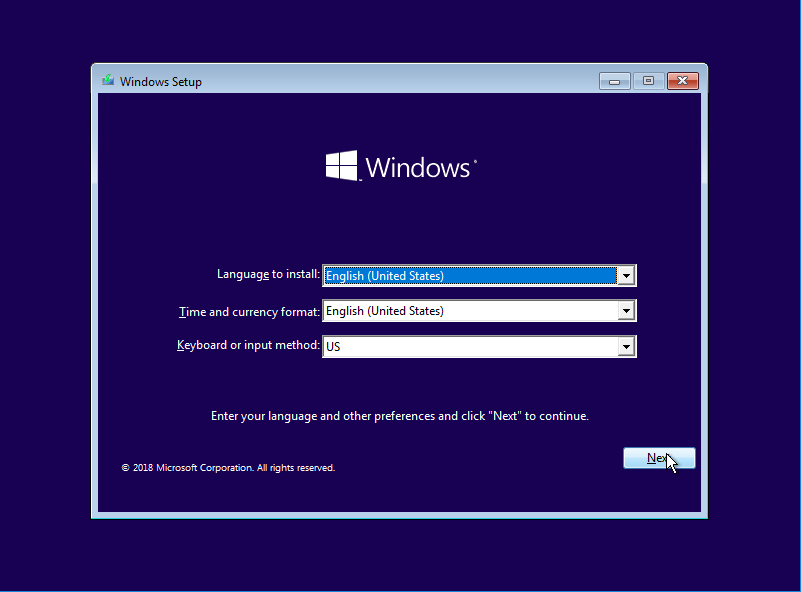
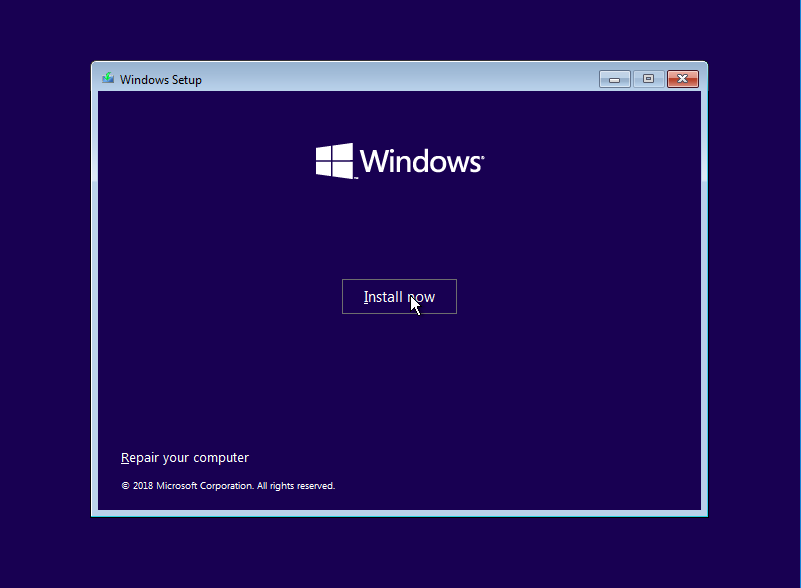
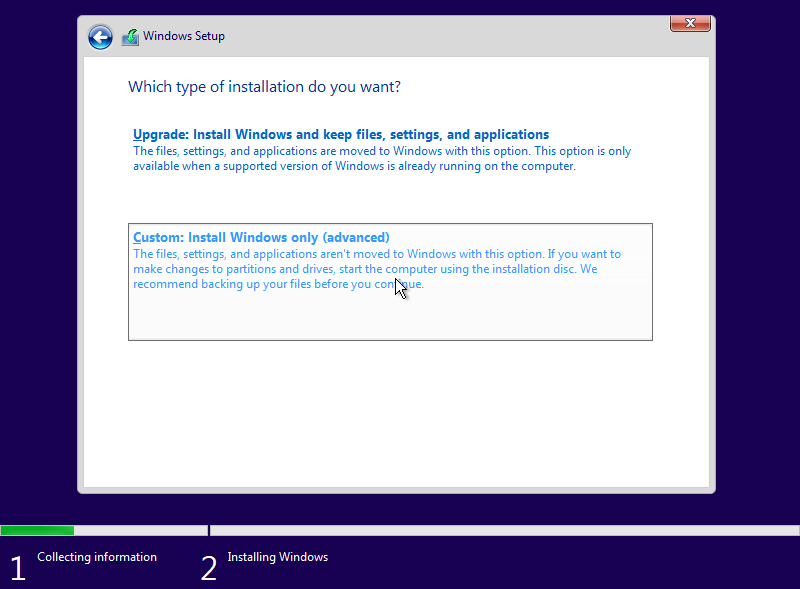
Click Load driver.
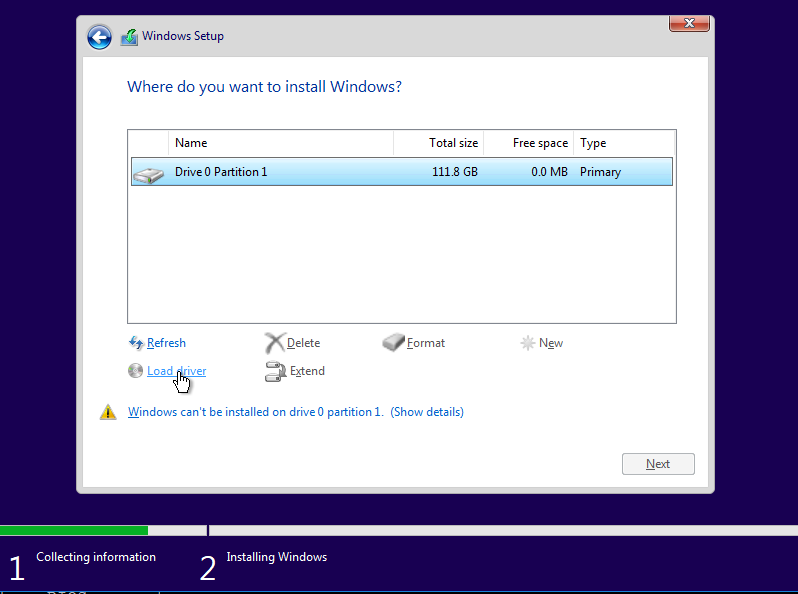
Click Browser and go to the drive that includes the virtio win drivers. Select all under vio\w10\amd64. Install the following drivers into the image:
- Virtio-balloon
- Virtio-net
- Virtio-rng
- Virtio-scsi
- Virtio-serial
- Virtio-block
- Virtio-input
Note
Be sure to unselect Hide Drivers that aren’t compatible with this computer’s hardware near the bottom of the page.
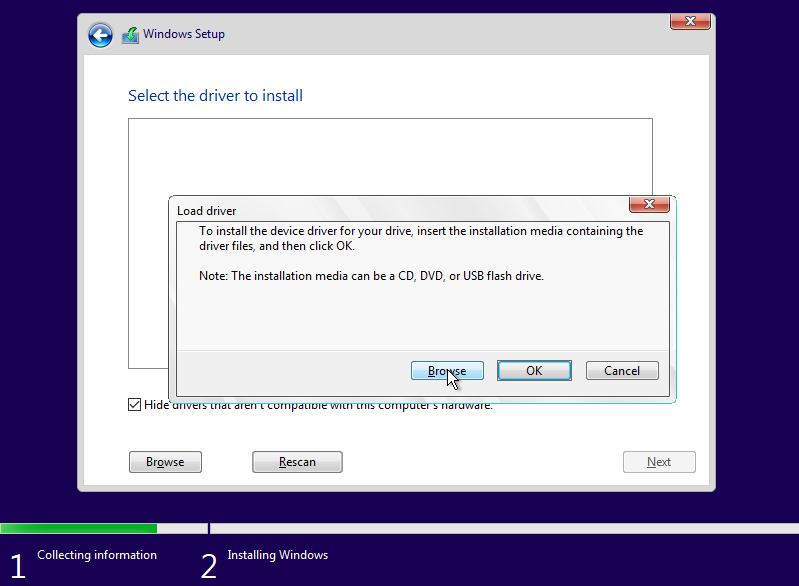
Click Next.
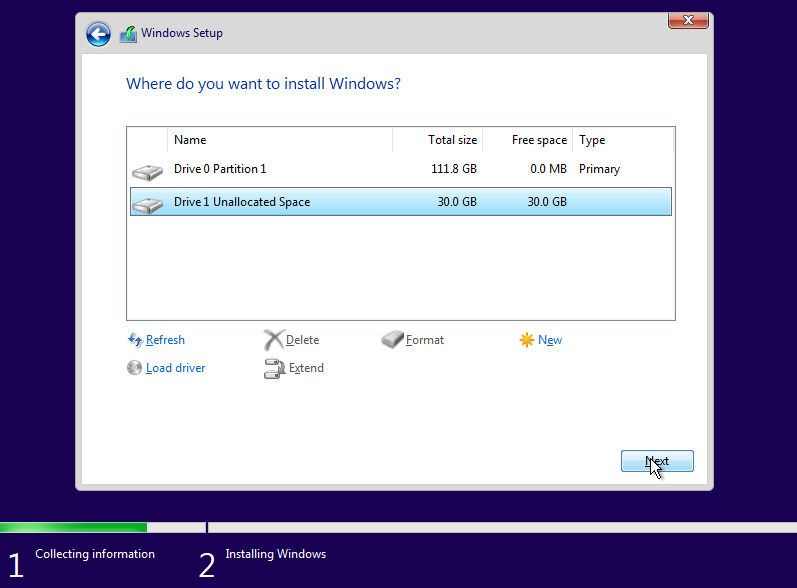
Continue with the installation.
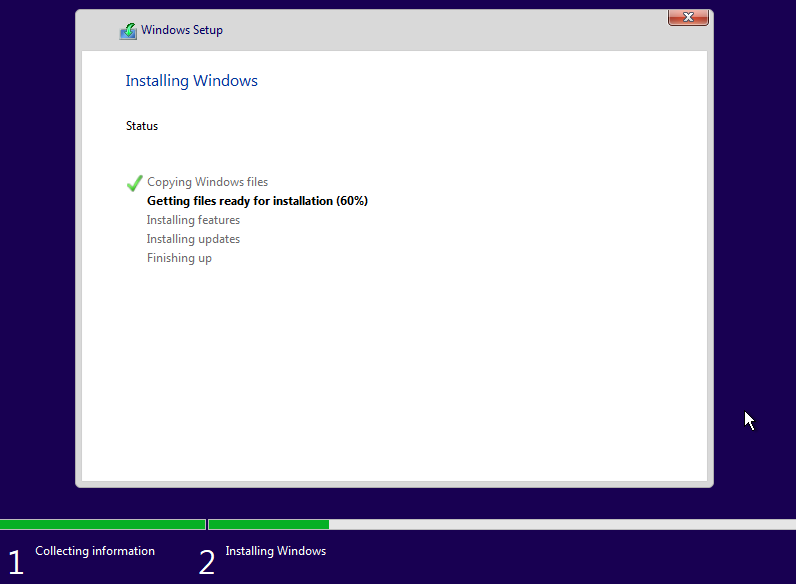
The system will restart.
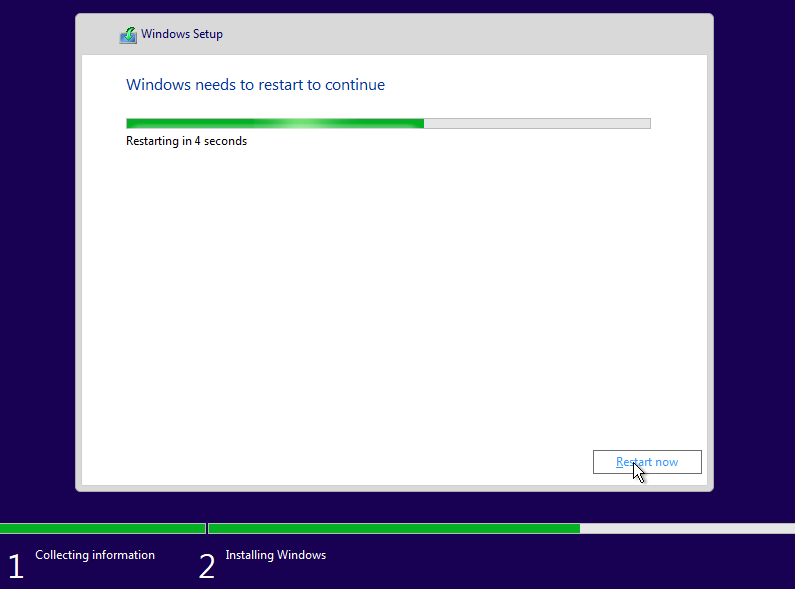
Windows will restart several times and then you will be asked to configure your system.
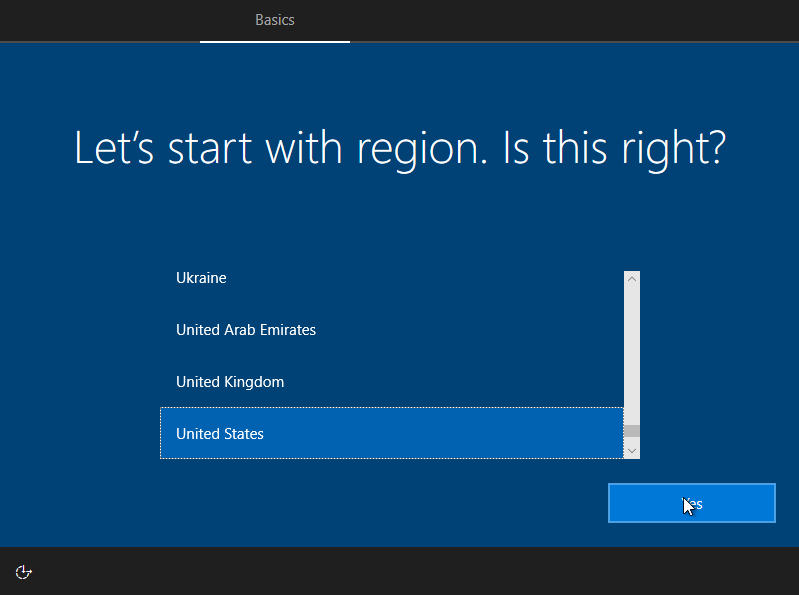
The Windows installation is completed after a few configuration steps; the Windows desktop displays.
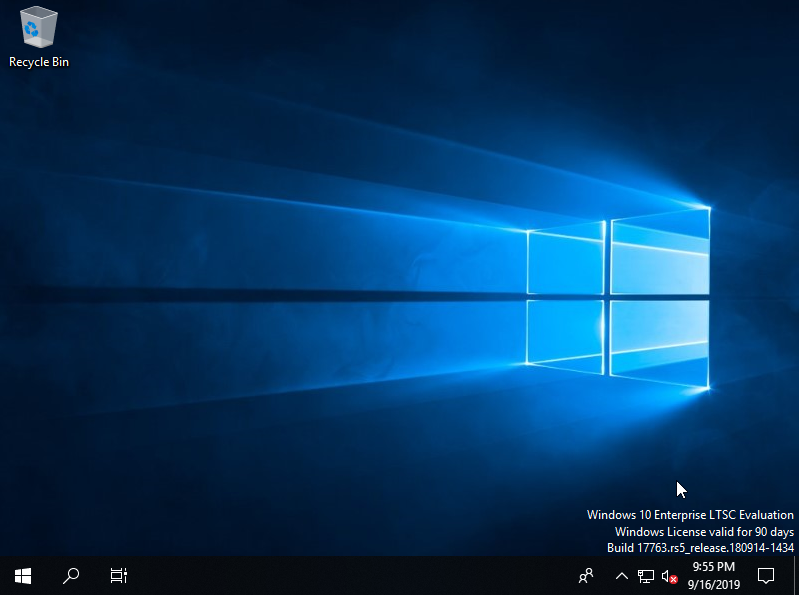
Copy Intel DCH Graphics Driver into Windows and install in safe mode, the display driver is updated to 7212.
Boot Windows on ACRN with default configuration¶
Modify the
/usr/share/acrn/samples/nuc/launch_win.shscript to specify the Windows image generated above.Run the
launch_win.sh. The WaaG desktop displays on the HDMI monitor.Note
We support GVT-g and GVT-d while launching Windows guest. If you use GVT-g, you can set up Weston in the Service VM, and follow the steps in Enable GPU Passthrough on the Skylake NUC to set up Weston as the desktop environment in the Service VM to experience Windows with the AcrnGT local display feature. If you use GVT-d, please set 64MB for DVMT Pre-Allocated and Enabled for PM Support in BIOS at first, then only Windows has display.
ACRN Windows verified feature list¶
| Items | Details | Status |
|---|---|---|
| IO Devices | Virtio block as the boot device | Working |
| AHCI as the boot device | Working | |
| AHCI cdrom | Working | |
| Virtio network | Working | |
| Virtio input - mouse | Working | |
| Virtio input - keyboard | Working | |
| GVT-g GOP & VNC remote display | Working | |
| GVT-g | GVT-g without local display | Working with 3D benchmark |
| GVT-g with local display | Working with 3D benchmark | |
| GVT-d | GVT-d with local display | Working |
| Tools | WinDbg | Working |
| Test cases | Install Windows 10 from scratch | OK |
| Windows reboot | OK | |
| Windows shutdown | OK | |
| Built-in Apps | Microsoft Edge | OK |
| Maps | OK | |
| Microsoft Store | OK | |
| 3D Viewer | OK |
Known Limitations¶
- The cursor is not visible with the GVT-g local display.
Explanation for acrn-dm popular command lines¶
Note
You can use these acrn-dm command lines according to your real requirements.
-s 2,passthru,0/2/0,gpu: This is GVT-d, to passthrough VGA controller to Windows. You may need to change 0/2/0 to match the bdf of the VGA controller on your platform.
-s 3,ahci,hd:/root/img/win10.img: This is the hard disk onto which to install Windows 10. Make sure that the slot ID 3 points to your win10 img path.
-s 4,virtio-net,tap0: This is for the network virtualization.
-s 5,fbuf,tcp=0.0.0.0:5900,w=800,h=600: This opens a port 5900 on the Service VM which can be connected to via vncviewer.
-s 6,virtio-input,/dev/input/event4: This is to passthrough the mouse/keyboard to Windows via virtio. Change
event4accordingly. Use the following command to check the event node on your Service VM:<To get the input event of mouse> # cat /proc/bus/input/devices | grep mouse
-s 7,ahci,cd:/root/img/Windows10.iso: This is the IOS image used to install Windows 10. It appears as a cdrom device. Make sure that the slot ID 7 points to your win10 ISO path.
-s 8,ahci,cd:/root/img/winvirtio.iso: This is cdrom device to install the virtio Windows driver. Make sure it points to your VirtIO ISO path.
-s 9,passthru,0/14/0: This is to passthrough USB controller to Windows. You may need to change 0/14/0 to match the bdf of the USB controller on your platform.
–ovmf /usr/share/acrn/bios/OVMF.fd: Make sure it points to your OVMF binary path.
Secure boot enabling¶
Refer to the steps in Enable Secure Boot in Windows for secure boot enabling.
Activate Windows 10¶
If you are using a trial version of Windows 10, you might find that some apps and features do not work or that Windows 10 automatically gets shut down by the Windows licensing monitoring service. To avoid these issues, obtain a licensed version of Windows.
For Windows 10 activation steps, refer to “Activate Windows 10”